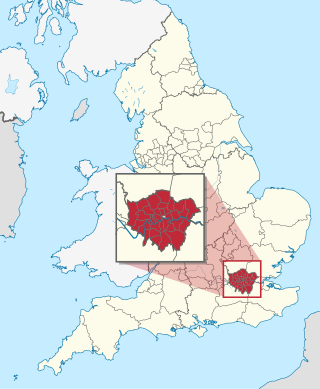
The London boroughs are the 32 local authority districts that together with the City of London make up the administrative area of Greater London, England; each is governed by a London borough council. The present London boroughs were all created at the same time as Greater London on 1 April 1965 by the London Government Act 1963 and are a type of local government district. Twelve were designated as Inner London boroughs and twenty as Outer London boroughs. The City of London, the historic centre, is a separate ceremonial county and sui generis local government district that functions quite differently from a London borough. However, the two counties together comprise the administrative area of Greater London as well as the London Region, all of which is also governed by the Greater London Authority, under the Mayor of London.

The London Borough of Hammersmith and Fulham is a London borough in West London and which also forms part of Inner London. The borough was formed in 1965 as the London Borough of Hammersmith from the merger of the former Metropolitan Boroughs of Fulham and Hammersmith. The name was changed to Hammersmith and Fulham in 1979. The borough borders Brent to the north, the Royal Borough of Kensington and Chelsea to the east, Wandsworth to the south, Richmond upon Thames to the south west, and Hounslow and Ealing to the west.

Islington was a civil parish and metropolitan borough in London, England. It was an ancient parish within the county of Middlesex, and formed part of The Metropolis from 1855. The parish was transferred to the County of London in 1889 and became a metropolitan borough in 1900. It was amalgamated with the Metropolitan Borough of Finsbury to form the London Borough of Islington in Greater London in 1965.
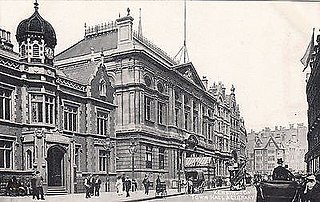
The Metropolitan Borough of Kensington was a metropolitan borough in the County of London from 1900 to 1965, which since 1901 was known as the Royal Borough of Kensington, following the death of Queen Victoria, in accordance with her wishes.
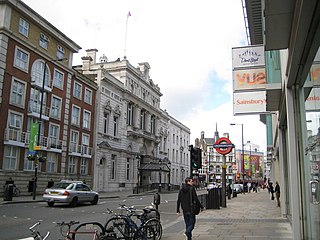
The Metropolitan Borough of Fulham was a metropolitan borough in the County of London between 1900 and 1965, when it was merged with the Metropolitan Borough of Hammersmith to form the London Borough of Hammersmith and Fulham. It was a riverside borough, and comprised the many centuries-long definition of Fulham so included parts often considered of independent character today Walham Green, Parsons Green, Hurlingham, Sands End and that part of Chelsea Harbour west of Counter's Creek. The SW6 postal district approximately follows this as does the direct, though less empowered, predecessor Fulham civil parish.

The Metropolitan Borough of Hammersmith was a metropolitan borough in London, England from 1900 to 1965. It included Hammersmith, Wormwood Scrubs, Old Oak Common and Shepherd's Bush.

The Metropolitan Borough of Hackney was a metropolitan borough of the County of London from 1900 to 1965. Its area became part of the London Borough of Hackney.

The London Government Act 1899 was an act of the Parliament of the United Kingdom that reformed the administration of the capital. The act divided the County of London into 28 metropolitan boroughs, replacing the 42 local authorities administering the area. The legislation also transferred a few powers from the London County Council to the boroughs, and removed a number of boundary anomalies. The first elections to the new boroughs were held on 1 November 1900.

The Metropolis Management Act 1855 was an act of the Parliament of the United Kingdom that created the Metropolitan Board of Works, a London-wide body to co-ordinate the construction of the city's infrastructure. The act also created a second tier of local government consisting of parish vestries and district boards of works. The Metropolitan Board of Works was the forerunner of the London County Council.

Hackney London Borough Council, also known as Hackney Council, is the local authority for the London Borough of Hackney, in Greater London, England. It is a London borough council, one of 32 in London. The council has been under Labour majority control since 2002. Since 2002 the council has been led by a directly elected mayor. The council meets at Hackney Town Hall and has its main offices in the adjoining Hackney Service Centre.

Islington London Borough Council, also known as Islington Council, is the local authority for the London Borough of Islington in Greater London, England. It is a London borough council, one of 32 in London. The council has been under Labour majority control since 2010. The council meets at Islington Town Hall.

Hammersmith was a civil parish in London, England, from 1834 to 1965. The hamlet of Hammersmith in the parish of Fulham had been governed by the Hammersmith Vestry following the construction of the chapel of St Paul's in 1629–1631. The Hammersmith Parish Act 1834 made formal the separation from Fulham. The parish was recombined with Fulham as the Fulham District for civil purposes from 1855 to 1886 and for the New Poor Law from 1845 to 1889. In 1900 the parish was superseded for local government by the Metropolitan Borough of Hammersmith. The parish continued to be used for election of boards of guardians until 1930 and was abolished in 1965. Its former area now forms the northern part of the London Borough of Hammersmith and Fulham.
Fulham was a local government district within the metropolitan area of London, England from 1855 to 1886. It was formed by the Metropolis Management Act 1855 and was governed by the Fulham District Board of Works, which consisted of elected vestrymen from the parishes of Fulham and Hammersmith.

Lewisham London Borough Council, also known as Lewisham Council, is the local authority for the London Borough of Lewisham in Greater London, England. It is a London borough council, one of 32 in London. The council has been under Labour majority control since 2010. It has been led by a directly elected mayor since 2002. The council meets at Lewisham Town Hall in the Catford area of the borough.
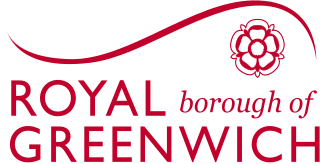
Greenwich London Borough Council, also known as Greenwich Council or the Council of the Royal Borough of Greenwich, is the local authority for the Royal Borough of Greenwich in Greater London, England. It is a London borough council, one of 32 in London. The council has been under Labour majority control since 1971. It meets at Woolwich Town Hall and has its main offices at the Woolwich Centre opposite.
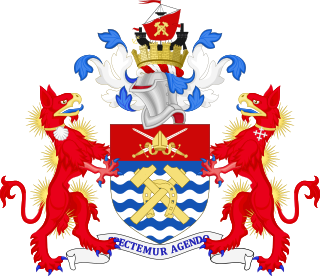
Hammersmith and Fulham London Borough Council, which styles itself Hammersmith and Fulham Council, is the local authority for the London Borough of Hammersmith and Fulham in Greater London, England. It is a London borough council, one of 32 in London. The council has been under Labour majority control since 2014. The council's usual meeting place is at Hammersmith Town Hall.

Southwark London Borough Council, also known as Southwark Council, is the local authority for the London Borough of Southwark in Greater London, England. It is a London borough council, one of 32 in London. The council has been under Labour majority control since 2010. The council is based at 160 Tooley Street.
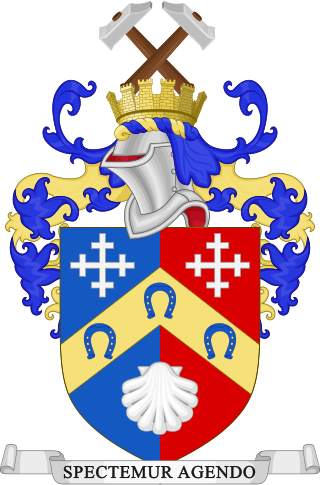
The Hammersmith Vestry was the vestry of Hammersmith from c.1631 to 1900. The vestry was established following the building of a chapel of ease for the inhabitants of Hammersmith in the parish of Fulham. Hammersmith became a distinct parish in 1834 and the vestry was also known as the Vestry of the Parish of Hammersmith.

Thomas Chamberlen was a British builder and politician who served as the first Mayor of the Metropolitan Borough of Hammersmith from 1900 to 1902.

The Mayor of the Metropolitan Borough of Hammersmith was the mayor of the Metropolitan Borough of Hammersmith, which existed from 1900 to 1965.



















